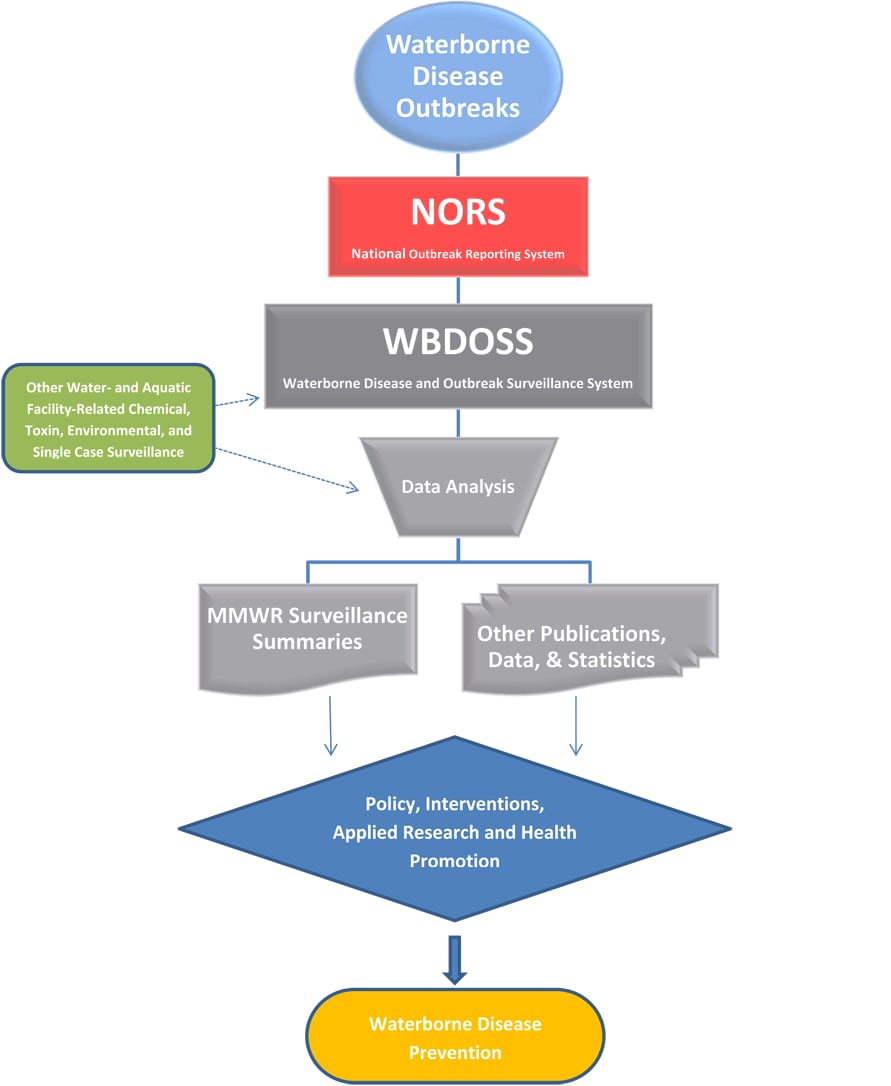What to know
The Waterborne Disease and Outbreak Surveillance System (WBDOSS) is the primary source of data concerning the scope and health effects of waterborne disease outbreaks in the United States. WBDOSS collects data on waterborne disease and outbreaks associated with recreational water, drinking water, and environmental and undetermined exposures to water.

Why it's important
CDC and the U.S. Environmental Protection Agency (EPA) periodically review outbreak reports from U.S. states and jurisdictions and report on outbreak characteristics, including the water systems, venues, settings, numbers, and causes of outbreak-related illnesses. These summaries help public health practitioners better understand the germs, settings, and contributing factors (for example, water was not disinfected properly) involved in outbreaks linked to water. They also can help identify emerging waterborne disease threats and be used to inform and assess outbreak prevention measures.
Since 1971, CDC has published summary reports for waterborne disease outbreaks:
- 2015 forward: Reports are published on CDC's Summary Reports of Waterborne Outbreaks page.
- 2009–2014: Reports were published in the MMWR Weekly with supplemental content posted on this website.
- 1971–2008: Reports were published as MMWR Surveillance Summaries.
